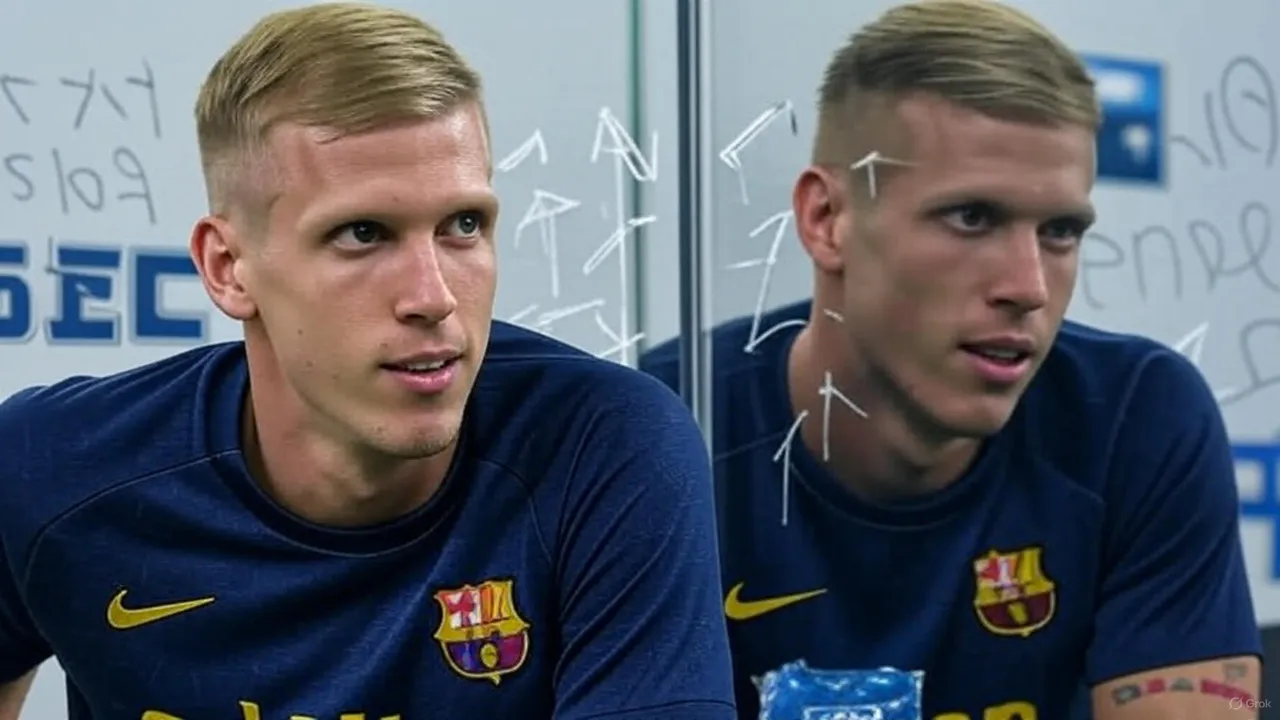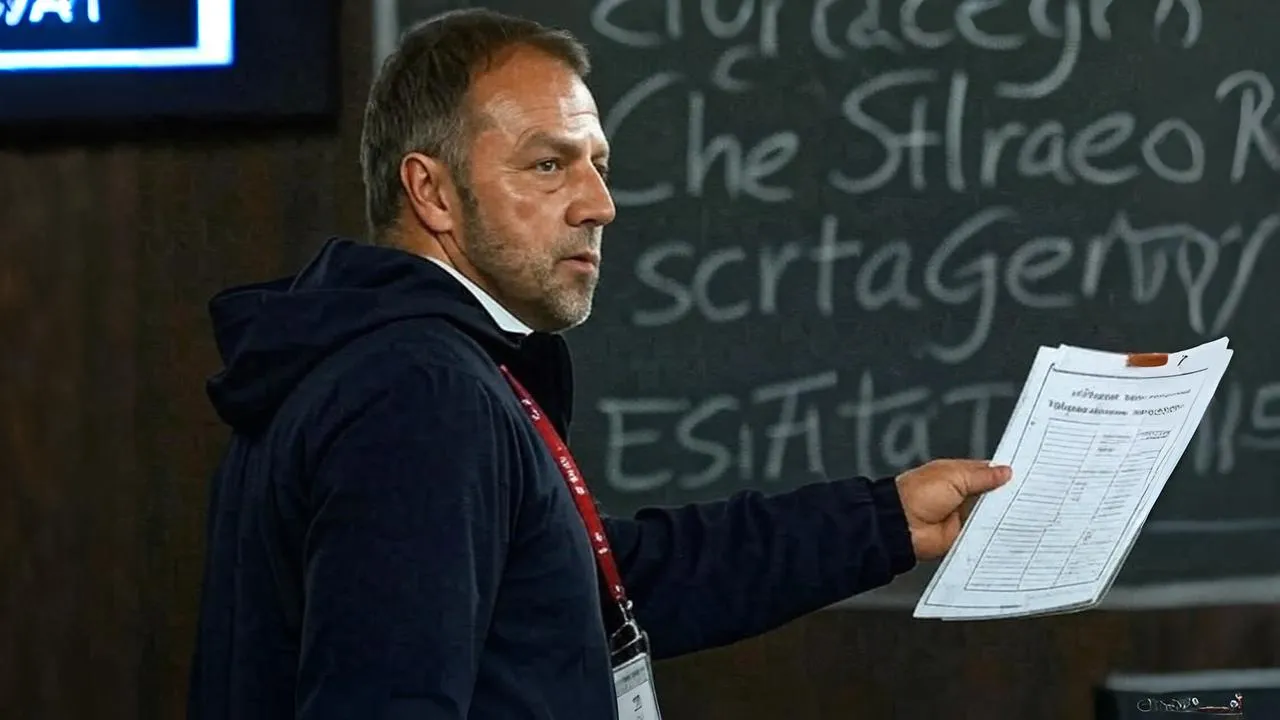Barcelona’s attacking plan takes shape: Nico Williams set for the left wing, Olmo preparing for false nine role
Hansi Flick is reshaping Barcelona’s front line with Nico Williams arriving for the left flank and Dani Olmo preparing to operate as a false nine, forming a new attacking core alongside Yamal, Raphinha and Lewandowski.
4 minutes

AI-generated image. Editorial use only.


As Barcelona near the final stages of Nico Williams’s transfer, manager Hansi Flick is preparing to reshape the attacking line ahead of the 2025–26 season. According to SPORT, Flick plans to establish a more fluid and productive system by adjusting the roles of certain players within the current squad. As part of this plan, Dani Olmo is being considered for a false nine role.
According to AS, Barcelona are close to activating the €62 million release clause for Athletic Club winger Nico Williams. With his arrival, he will take over the left wing, while Lamine Yamal is set to continue on the right flank. Raphinha is expected to operate centrally, and Robert Lewandowski will retain his role as the forward spearhead. This structure offers a balanced and versatile front line, with each of the four players fulfilling a distinct role in Flick’s system.
New role for Dani Olmo

Among the tactical changes, the most striking is the repositioning of Dani Olmo. According to SPORT, Flick is considering deploying Olmo as a false nine in the 2025–26 season. Having mainly played as a number 10 last season, Olmo may now serve as Lewandowski’s alternative at the tip of the attack. His link-up play, technical quality and vision make him a natural fit for this role.
Physical programme inspired by the Pedri model
To ensure Olmo can perform consistently in this new role, a tailored physical programme has also been put in place. AS reports that the club has activated a special physical development plan similar to the one used for Pedri last season. The system, built on muscle analysis and personalised loading plans conducted in the USA, aims to reduce Olmo’s injury risk and enhance his physical resilience.
Internal evaluation: high satisfaction and expectations
AS also states that all parties — Flick, the club’s management and Olmo himself — were satisfied with his first season. Despite missing 15 matches due to injury in 2024–25, Olmo contributed 12 goals and 7 assists. These contributions directly accounted for an eight-point impact. Barcelona expects Olmo to build on these numbers in his new role.
Williams’s impact on the left is reshaping the system
Nico Williams is far more than a conventional winger. His speed, explosiveness and high-level dribbling ability allow him to change the course of a match in an instant. Once in possession, he poses a serious threat to opposing defences. He doesn’t just hug the touchline and chase dribbles — he frequently cuts inside, makes runs in behind and positions himself in goal-scoring areas.
In 2024–25, Williams recorded 11 goals and 7 assists in 45 appearances for Athletic Club. But beyond the numbers, Williams constantly keeps opposition defences on edge, forcing them to react rather than act. Right-backs facing him hesitate to push forward into the opponent’s half due to his threat, weakening their team’s ability to attack down the right. In other words, Williams contributes defensively in an indirect but meaningful way. Often, it takes multiple defenders to stop him, creating significant gaps in the opposition’s backline which his teammates can exploit.
In Flick’s planned attacking structure, Williams will operate on the left, Yamal on the right, Raphinha through the middle, and Lewandowski up front. On the left side, Williams can serve both as a creator and provider. He may at times make inverted runs or drift inside to create more shooting opportunities for Lewandowski. He can also generate one-on-one situations for Yamal on the opposite flank. As Raphinha orchestrates play from the centre, Williams’s pace and inside runs can disrupt defensive structure and generate frequent scoring chances for Raphinha, Yamal and Lewandowski.
The Flick model: from past success to future design
During his time at Bayern Munich, Flick employed a similarly high-tempo, transition-based system using players of comparable profiles. Thomas Müller acted as the central link, Gnabry and Coman operated as dynamic wide men, and Lewandowski played the finishing role inside the box. This structure helped the club secure both the Bundesliga and the Champions League. Now, Flick is looking to recreate this approach at Barcelona with a new generation of technical talents like Yamal, Williams, Raphinha and Olmo.

This project marks both a new phase in Flick’s managerial career and a deliberate attempt to elevate Barcelona’s current level. With the team entering the new season as La Liga champions, the primary goal is to maintain and improve their footballing standards. The strong tactical alignment between Flick and the club suggests that this system is more than just a short-term plan — it represents a lasting step towards shaping Barcelona’s future identity on the pitch.
Share your thoughts, join the conversation!

Rodri injury shakes City: Al Hilal defeat dents morale ahead of Premier League start

European puzzle deepens at Crystal Palace: UEFA uncertainty continues as Woody Johnson investment awaits Premier League approval

Jonny Evans appointed as head of academy player development at Manchester United

Real Madrid push for Vinícius Júnior renewal despite 2027 deal; Courtois and Brahim follow

Ronaldo signs landmark deal: stays at Al Nassr until 2027, praises Saudi Arabia’s 2034 World Cup vision

Transfer tensions rise over Gyökeres: Sporting president sends indirect warning to Arsenal and Manchester United


